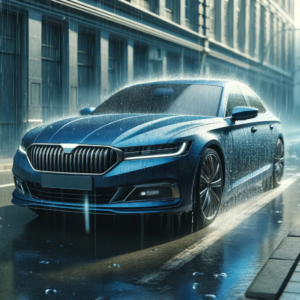Nano Coating for Cars: A Revolution in Automotive Protection
Automobiles are more than just a mode of transportation; they are an investment, a symbol of prestige, and a source of pride for their owners. To preserve and enhance the appearance of these valuable assets, nano coating for cars has emerged as a groundbreaking solution. In this article, we will explore the wonders of nano coating technology, its benefits, and why it has become a must-have for car enthusiasts and everyday drivers alike.
The Science Behind Nano Coating
Nano coating, also known as ceramic coating or nano-ceramic coating, is a liquid polymer that is applied to the exterior surfaces of a vehicle. What sets nano coating apart is its use of nanoparticles, often composed of materials like silica or titanium dioxide. These nanoparticles create an ultra-thin and invisible protective layer that bonds with the car’s paint and other surfaces, such as glass and metal.
The magic of nano coating lies in its nanoscale structure, which results in a superhydrophobic and oleophobic surface. In simple terms, it repels water and oil-based substances. When water or other liquids come into contact with the coated surface, they bead up and roll off, taking dirt and contaminants with them. This not only prevents water spots but also keeps the car looking cleaner for longer.
The Benefits of Nano Coating for Cars
 The advantages of nano coating for cars are numerous and have made it a game-changer in automotive protection:
The advantages of nano coating for cars are numerous and have made it a game-changer in automotive protection:
- Superior Protection: Nano coatings provide unmatched protection against environmental contaminants such as UV rays, oxidation, bird droppings, tree sap, and road salt. They act as a sacrificial layer, preventing damage to the underlying paint.
- Enhanced Durability: The durable nature of nano coatings means they can last for years, offering long-term protection and reducing the need for frequent waxing or polishing.
- Hydrophobic Properties: Nano coatings create a hydrophobic surface, causing water to bead up and roll off. This not only keeps your car looking clean but also reduces the risk of water spots and damage caused by acidic rain.
- Stunning Aesthetics: The glossy finish achieved with nano coating enhances the appearance of your vehicle, giving it a deep and vibrant shine that lasts.
- Easy Cleaning: The smooth, non-porous surface of nano-coated cars makes them easier to clean. Dust, dirt, and grime have a harder time adhering to the surface, simplifying the cleaning process.
- Resale Value: Vehicles with nano coating often fetch a higher resale value due to their well-maintained appearance and protected paint.
Nano Coating Application and Maintenance
The application of nano coating should be performed by trained professionals for the best results. While there are DIY kits available, professional application ensures proper preparation and even coverage, maximizing the coating’s effectiveness.
To maintain the benefits of nano coating for cars, regular maintenance is essential:
- Routine Washing: Regularly wash your car to remove dirt and contaminants. Use a pH-neutral car wash shampoo to avoid stripping the coating.
- Avoid Harsh Chemicals: Refrain from using abrasive or harsh chemicals that can damage the coating. Stick to recommended cleaning products.
- Periodic Top-Up: Depending on the product used and the level of exposure, consider periodic top-ups to refresh the coating’s hydrophobic properties.
In conclusion, nano coating for cars is a technological marvel that enhances both the appearance and protection of your vehicle. Whether you’re a car enthusiast looking to preserve your prized possession or an everyday driver seeking long-term protection for your car, nano coating has established itself as a revolutionary shield that elevates and safeguards your automotive investment.
Have any questions or share your expertise for Car Coatings
Join the conversation!



Plaats een Reactie
Meepraten?Draag gerust bij!